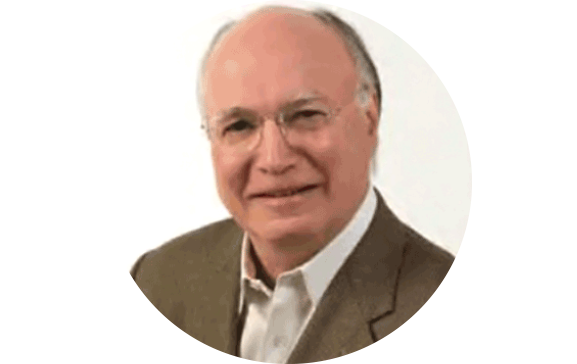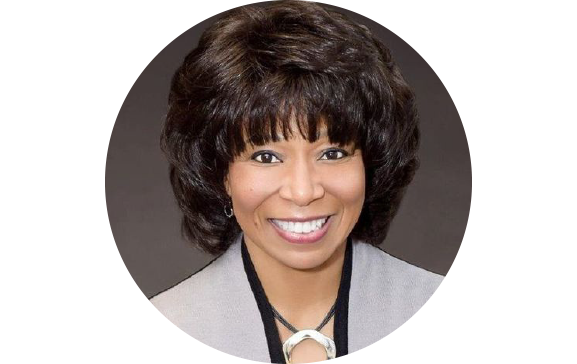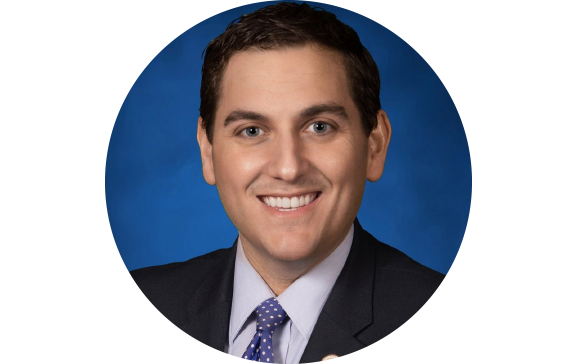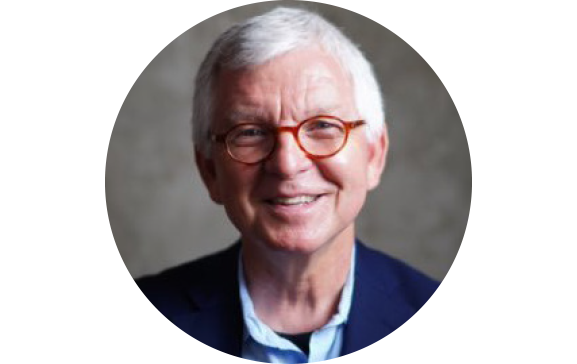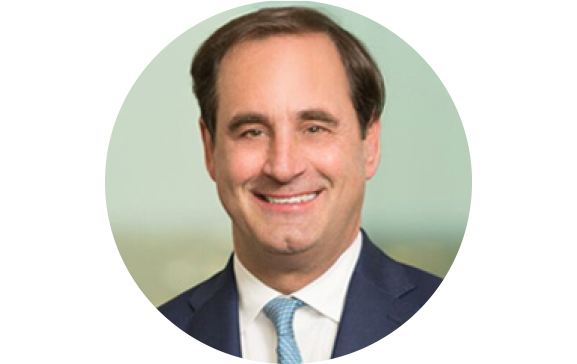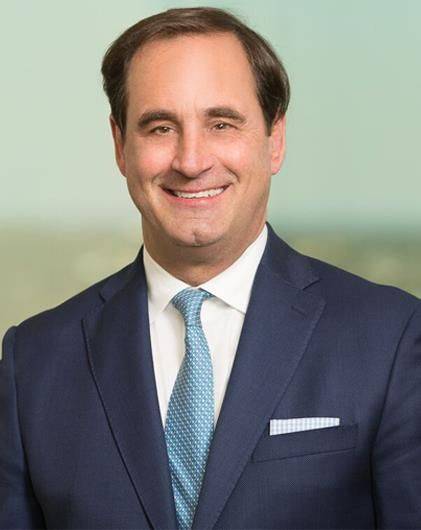"The Next Normal": Business Leaders Discuss the Path Forward for New Orleans
PANELISTS:
Mike Eckert, Chairman of NO/LA Angel Network
Deborah Elam, President & CEO of Corporate Playbook Consulting
Walt Leger, Sr. VP and General Counsel of New Orleans & Company
Mark Romig, Sr. VP and Chief Marketing Officer of New Orleans & Company
Susan Taylor, Executive Director of New Orleans Museum of Art
MODERATOR:
Marshall Redmon, Managing Partner of Phelps
There’s no doubt that the COVID-19 pandemic has had a devastating effect on New Orleans.
How do we combine our strengths in tourism, diversity, emerging industries, professional services and nonprofits to rebuild New Orleans in a different way? How do we rebuild in a holistic way that promotes the diversification of our economy and our people? These questions were at the heart of a recent roundtable hosted by Phelps and Gulf Point Advisors. Local business leaders engaged in a powerful discussion about what could be next for New Orleans. Read on for an overview of the conversation.
Note: The comments in this article and accompanying video were made on June 17, 2020. This transcript has been condensed for brevity and clarity. Click here to watch the full discussion.
Marshall Redmon: Walt and Mark, can you tee this up and give us a short overview of what you’re seeing on the ground in your industry?
Walt Leger: The hospitality industry is devastated. We’ve seen 8 million employees in the hospitality industry across the nation lose their jobs. There's been a $500 billion loss of the overall tourism and hospitality economy across the nation. That's half of a trillion dollars of lost spending in travel alone and $80 billion in lost revenue across the country.
In Louisiana we've seen 118,000 jobs cut in half over the last 12 weeks and 50% unemployment in the hospitality sector in the metropolitan New Orleans area. Last year direct spending in tourism was $10.2 billion, so that equates to about $200 million a week in direct spending across the hospitality sector that has not been occurring. To give you an example of just how dramatic it is, the New Orleans airport just a couple of weeks ago was down to 6% of its operating level, so 94% down from what it was operating on March 15th.
Hotel occupancy has dipped for many weeks below 10%. There’s been an absolutely devastating impact on the ability to market and promote our tourism and hospitality industry and to get the message out about what New Orleans has to offer.
Mark Romig: On the bright side, we have been encouraged by the amount of brand love that is out there for New Orleans. Though our budget is operating at about 27% of what it was last year, we have continued to put out fresh content talking about what people have missed about New Orleans.
We also realize that the trend over the next several months is people are more interested in driving as opposed to flying. Our sweet spot, fortunately, is our drive market. About 72% of our visitation comes from within an eight-hour drive into the city or a one-and-a-half-hour flight. So we are going to be methodically marketing New Orleans as a destination to this market.
We know that we've got a long haul ahead of us, but we're committed to listening to what the consumers are doing as we get through this. And if we don't have any setbacks and people are more interested in getting out and traveling, we’ll ratchet it up as we can. If all goes well and we can get to the other side of the vaccine and the therapeutics, industry leadership is thinking this is a two year to two and a half year recovery at best.
Marshall Redmon: Thank you. It'll be interesting to hear your view on how we show that we're open again and how we give folks confidence that we're a place to come, both for large events and small events.
Mark Romig: Cleanliness is at the top of our messaging—that we're taking this very seriously and that our attractions, hotels and restaurants are following the highest standards and protocols. Because the consumer is going to weigh that on what destination they go to. We also need to be very intentional about including the entire community in what we do.
Marshall Redmon: That's a good segue over to Deb. Deb, could you give us a perspective from where you are?
Deborah Elam: We've got a long road to what I'll call the “next normal,” not the “new normal.” Because I think there may be a next normal and then another.
It's going to require resolve and inclusion. There's a risk that organizations that already perceive themselves to be diverse and inclusive may put diversity on the back burner to attend to other pressing business needs, like just staying afloat.
But you've got to think about diversity and inclusion in a different way. You’ve got to look at diversity and inclusion as an opportunity. There's a McKinsey study that came out last month that shows organizations that are diverse and inclusive show better business performance. That's a hard fact. So shifting the prism to say, “How do I look at everything I'm doing through the lens of diversity, such that it touches every piece of my supply chain? How does diversity and inclusion help me and enable me to grow and come back from where we’ve been?”
Marshall Redmon: Speaking of McKinsey, they say there are three ways to grow your business. You either take somebody else’s business, you merge, or you go after new business. That brings me to Mike, who works with emerging industries exploring new business opportunities. Mike, what does the situation look like from your point of view?
Mike Eckert: The impact of the economic downturn on the early-stage ecosystem in New Orleans has been shocking. Most of these companies are very thinly capitalized. Most of them are very customer dependent, perhaps more so than larger companies. Any change and any shock to the system puts them in an existential position.
We have 23 companies in our portfolio. Their strategic planning right now involves ensuring that they can keep their doors open by the end of the year. Our group is working very closely with them in terms of coaching, mentoring and providing guidance regarding managing their burn rates. We’re helping them incur these very challenging lessons, because many of these entrepreneur CEOs are young and this is their first crisis. Unfortunately, a few of the companies have gone under. These are companies that primarily were involved in consumer products and hospitality.
It’s a mixed bag for us. In most cases, it's not good. For many of these companies, it’s enormously uncertain. For the investors, it's enormously uncertain. And that's the world we live in right now.
Marshall: This uncertainty is also affecting our nonprofits. Many are worried about how to get the infusion of money needed to protect not just their people, but also their projects. What’s it like, Susan?
Susan Taylor: It's a serious challenge. I don't think we've ever faced anything like it. On March 16, we closed our doors three days after we opened an exhibition from the Asia Society of the Rockefeller collection. It was to be a major initiative with tourists and upcharges on the exhibition, and now all that revenue is gone. So we have a 30% decrease in our budget, we closed our doors and fundraisers are canceled.
We immediately pivoted to sourcing new funding, which was in the form of the PPP funding. That just ran out on Friday. So now we're engaging with other entities to help us along. We just received a grant from the National Endowment for the Humanities for personnel, and we have other grants pending.
One of the things that's distinctive about New Orleans in the best of ways is the event culture here. That event culture is the vehicle for fundraising. So when we can't gather in large crowds or groups of people for the safety and health of our visitors, we suffer economically. So that is a very different mindset for us to be working with now. We have to think about raising money in a different way.
We pivoted to digital to look at what we could do online, like developing exhibitions that would change every week. However, various studies and census show about 30% of households in New Orleans do not have access to the internet. So that meant that we had to redeploy our resources once again to analog materials and for the children we serve, we had to find distribution mechanisms to put those materials out there, whether we delivered them or they were picked up. We serve about 15,000 schoolchildren and pre-school aged children.. So it completely changed the way we did our work.
A national study that just came out from SMU, the Data Arts Institute, said that the impact of COVID-19 on finances is a $6.8 billion net loss in the culture industry. That's the equivalent of an almost 30% deficit. So our budget challenges align very closely nationally.
One of the things that we're looking at is how we’re going to change the way we do our work when people come back into the museum. The good news is cultural institutions have the highest ranking of trustworthiness among organizations and other entities in the leisure/entertainment world. We’re trusted to make sure that we have social distancing and that there are enhanced cleaning protocols. They trust us to do what we say we're going to and to deliver information.
We’re also looking at how to gather people together in meaningful ways in response not only to the issues of COVID-19 over the last several months, but also the latest social unrest and issues that have arisen from that. So we have a lot of work that we can do. It just depends on how big the groups are that we can gather to actually work with.
I'm concerned about a second wave. I'm concerned about what happens in November or December and how we can pivot once again to, as Deb put it, the “next normal.” What is the next normal, and what are we going to do to make it work? We all know the studies that have come out that masks work. That is an opportunity to message, and that messaging has to be consistent. So one of the things that we can all do is be consistent in our messaging and how we how we present our public face to members of the public and citizens of New Orleans. If we have to close again, it'll be through the winter. I think that's clear, because the safety of our visitors and our staff is paramount to us.
So this is where we are. We have a lot of opportunity and a lot of upside at this point. It's pretty much all upside, because we're really at the most challenging moment for the institution.
Marshall Redmon: One of the comments you made, Susan, was we've got this next wave potential. No one knows what’s coming, and that plays into how we get tourism back here fully. That takes us back over to Walt and Mark. Could you give us some perspective on how to make folks coming into our town comfortable again?
Mark Romig: Certainly, we want to graduate to phase three. Then we’ll have further openings and opportunities to have our festivals and our large meetings and other events back online. At the present time, in phase two, you can actually have a small meeting in a property with certain protocols in place, but we really need to get our meetings and convention business back online. Those visitors tend to spend three times more during their visit than leisure visitors. They're much more valuable to the per capita spend equation. A lot of services in the city rely on a healthy tourism economy—accountants, attorneys, food vendors—so it's something that touches everyone. As soon as we're able to do that safely, we’ll be back on a road to recovery.
The safety message has got to be baked into everything we do. We are building out new pages on our website that speak to the convention center safety protocols and protocols at the attractions, hotels and restaurants. I'm happy to say that a lot of the restaurants are taking this very seriously. Not all visitors are doing it. But the LRA is very serious about this. So is Susan with her team, Stephen Watson at The National WWII Museum and Ron Foreman at Audubon Nature Institute.
That message has to be part and parcel of what we're telling people—that when you come to New Orleans, you're going to see the vanguard of national protocol in place.
Walt Leger: I think Mark hit the nail on the head. Several months ago, we had one of the largest outbreaks in the country that was increasing at one of the highest rates across the world. We've reversed that dramatically to a point where we're testing at a higher rate than almost any other state in the country. Our level of disease and our level of hospitalization have decreased. And there's certainly a story to tell about appropriate response and collaboration between government at the state and local level, as well as the people of our community. And the data lays that out. That is a message we've been sharing with customers across the country as they talk about whether they want to maintain meetings that they have in the fall.
One of the earliest messages was that although we have a high level of infection, we also have among the highest level of testing. We argued that knowing what you're dealing with was more important than having artificially low numbers, and that has proven to be true. It's allowed us to respond appropriately.
At the convention center, we very quickly started to identify the best practices across the country. There is a group called the Global Biorisk Advisory Council (GBAC), and the convention center here in New Orleans will be among the first in the country to be designated as a GBAC star facility. This will send a message to people across the country that we are committed to the highest level of cleanliness, enhanced mitigation efforts and staff training to protect the employees and those who will be visiting.
Those are a couple of the things that we can highlight as success stories, and we’ll continue to look at best practices to try to ensure that people not only are safe when they come to the city, but actually feel safe as well. Both of those things are important. We have to deliver on the safety, but we also have to make sure that we're messaging clearly about that safety so people will be confident to return.
Marshall Redmon: To follow up on your point about messaging, what about the strength we've got in our diversity and in our people? Is that not something that we ought to be much more vocal about as we market? We've got a built-in natural advantage over lots of other places. Are we using it?
Mark Romig: I think we are using it. In the past, we've probably used it too much without paying for it. I think we've had to be more intentional about when we're discussing this, particularly the Black culture of New Orleans, which has provided many of the reasons people visit the city. We've only recently brought that into play where there's a good dialogue now. We're understanding that it has to be a two-way street.
I've got to give Deb the kudos for helping us become more intentional several years ago, when we had the need to kind of be hit over the head with a two-by-four to understand what we needed to do. And so with that, Deb, I’ll tag team over to you.
Deborah Elam: It's got to be a win-win if you're in business. The work that I was fortunate enough to do with Mark Romig and NOTMC was all about, “How do we showcase New Orleans? How do we celebrate New Orleans? How do we sell and market New Orleans, particularly to diverse visitors, such that they will come and spend money with diverse businesses here?” So everybody would win. More visitors to the city, more dollars into the diverse community, so everybody feels a part of the industry. Everybody feels like they're a part of this rising tide. If we leave anybody out, then nobody is a part of the tide.
Some of these things have got to have an infrastructure fix to them. I'm struck by Susan's comment that 30% of our population does not have access to internet. What does that say for school kids? What does that say for all of our communities that we want to tie into? So we've got to look at where those holes and where those gaps are. We've got a great entrepreneurial community here. There are all these different organizations with entrepreneurial push and spirit. So my question is, how do we get them all in a room? How do we pull them together, such that we lift all the boats?
There's so much inherent in who we are. I believe in the city, but I believe that we've got to do better to connect all the dots so that all the boats rise. That's what will truly make us a great city.
Like Katrina, this is a hinge moment. With the backdrop of COVID-19 and the social unrest, we can rebuild in a way with intention that will help us accelerate other cities in this country. I truly believe that.
Marshall: I can’t agree with that more. Mike, what then do we do? How do we fuse the emerging industries with the brown and Black population, and where do we find our leaders? We've got enablers, but do we have the true leadership we need?
Mike Eckert: I believe we do, but in terms of this topic of diversity, I'd like to chat a bit about the topic of diversification, because I think that participates in the dialogue and in the building of a true ecosystem.
We have a number of different categories of startups and entrepreneurial endeavors in New Orleans. We're not deep in any one of these categories, but we have many. For example, Tulane and LSU Health are turning out professors, PhDs and post-docs that are developing drug discovery, health care and other kinds of biotech ideas. We have the Idea Village, which has formal programs primarily dealing with technology companies. We have Propeller, which offers formal programs dealing with entrepreneurs who start companies that have social impact or positive environmental impact. We have what I call garage entrepreneurs—people in their garages or their living rooms coming up with new apps and new technology ideas. Then we have local entrepreneurs. These are entrepreneurs who would like to start a lifestyle business like a cleaners, a hairstyling salon or some kind of a services business.
It’s because of the inherent diversity within New Orleans that we see so much gender and racial diversity among all of these. But we also see diversification in capital sources. What we need to do is put the enablers—the accelerators, incubators and universities—and the capital sources together in a room, map out the different kinds of entrepreneurial activity we have and identify how we can work together to engender these, coach these, mentor these, fund these and bring them along. My professional experiences have been national in scope and I've seen this occur in other markets with great success. It’s about getting the right people in the room to have that dialogue. Bringing all the pieces together is the way to start, with a good champion or leader who can drive the process.
Marshall Redmon: And maybe that’s part of our homework and our survey in our next step—how do pull those folks together? Because I think that roadmap makes perfect sense.
Susan Taylor: To take a page from other sectors, one thing is to try to factor in what a pipeline program looks like within the context of these entrepreneurial endeavors. We have several institutions of higher education here in the city that could generate the potential for people to engage with entrepreneurs at the very beginning of their careers and mentor and guide them. In my world, we have initiatives for college and high school students to get them into various nonprofit fields. So I would add a pipeline program to your vision, which I applaud.
Mark Romig: And the discussion around tourism shows that our economy needs to be diversified in a much greater way than it is now. To be in a situation where 40% of the city's revenue depends on retail activity from visitors is not sustainable in the long run. So it’s important to spread out revenue building away from tourism. The decision was made back in the 70s or 80s to put a lot of faith and effort into the tourism economy, and I think, unfortunately, something like this is showing what happens when we do that.
Mike Eckert: And the basis of that exists, but we're very thin in every lane in terms of diversification. In terms of the broader plan for the market, though, that absolutely needs to occur.
Deborah Elam: Before I retired, I worked on a team to assess where GE would move its global headquarters. As part of that process, I was involved with the team that looked at cities across the country. It gave me a lot of insight into what corporations would look at—what kinds of students do your universities produce? Do they produce engineers or STEM majors? What is the economic situation of your white population, diverse population? What is your diversity? What is your city council like? What kind of leadership do you have? There's a lot of screens that organizations and companies will look at. I'm speaking to what Mark Romig said about how to attract other things beyond just hospitality, so you're not solely wed to one major industry and you have a cushion should something like this happen.
Marshall Redmon: Is there anything you want to add that hasn't been asked or that needs to be brought out in this conversation?
Susan Taylor: I’d like to say something about cultural tourism. The city has an extraordinary history and many different histories and ways to access the history. So cultural tourism has an important role.
I'm struck by the cities that are opening up in Europe right now, like Amsterdam, Venice and Florence. They're all talking about slow tourism as opposed to moving quickly through these cities, absorbing everything you can and then leaving. I think there's a place for this in New Orleans. People stay longer. They spend more. They have resources to share with the city. It's important not to lose sight of what our histories mean to people who come here because it's an interesting place to visit.
Mark Romig: That is our sweet spot. That experiential discoverer, as they've been known, who don't sit by the pool with a book, but want to get out into the community and the neighborhoods and spend time. And they come back. About 65% of our visitors are repeat visitors, because they do as much as they can, and then they'll make a trip to come back to complete their journey.
Walt Leger: One of the things that often escapes attention is how crucial the convention and meeting business is to the tourism economy. Those tend to be your more experiential visitors. They tend to be more focused on being here to experience the city as opposed to purely for a recreational purpose. They also tend to spend significantly more. So assets like the convention center that drive the economy and that provide a foundation on which to build are critical as we rebuild.
I also support everything Mike said about diversification. The truth is that it is not important for the hospitality industry to be the most important industry in the city. It happens to be the case at the moment. But we would actually be a lot stronger as a tourism and hospitality industry if it were the fourth or fifth most important industry in the city. We have to keep working to get to a point where that is the case, where we can grow the pie so everybody gets a bigger piece. That's always been a challenge for our city and for our region, but the opportunity is there to diversify the economy. It will take nothing away from our tourism and hospitality sector. It will actually make it more profitable and healthier. In fact, it will make our whole community healthier and more profitable. And that's the kind of work that we all need to be doing together.
This has created a new opportunity for that kind of collaboration. We have to build upon it as we come out of our response to this and into our economic recovery.
Susan Taylor: Also, the tourism and hospitality industry is fueled by culture. The culture of the city is our greatest asset. If we don't support cultural tourism in a strong manner, maybe it's because we don't support culture in a strong manner in this city or state. And one of the issues is that the funds are not there. But if we aren’t supporting the culture that drives the creative economy and the creatives, we are missing a big component of how we develop as a strong, vibrant city in the future.
Marshall Redmon: Which brings us back to Deb’s “win-win.” We’re so grateful to our panelists. We appreciate your time, effort and insight. Hopefully, this is just the beginning and we can continue to carry this forward.
ABOUT THE PANELISTS
|
Mike Eckert
|
Mike is the founder and Chairman of the NO/LA Angel Network, a group of 112 high net worth individuals who work together to evaluate, fund and nurture early-stage companies. Prior to moving to New Orleans, Mike was part of the team that launched The Weather Channel and Weather.com, for which he served as CEO for 14 years, served as Chairman of The Atlanta Technology Angels and as a Fellow in Georgia Tech’s Venture Lab. Mike also served as Chairman and CEO of Pathfire, which grew into a leading digital asset management and distribution provider to media companies. Mike currently is actively engaged in various facets of the early stage business and investing ecosystem: in addition to serving as Chairman of the NO/LA Angel Network, as Chairman of the Investment Committee of The Pelican Angel Fund, a member of the Investment Committee of the New Orleans Start-Up Fund, and a member of the Limited Partner Advisory Council of the Louisiana VC Fund. |
|
Deborah Augustine Elam
|
Deb is President and CEO of Corporate Playbook Consulting, which specializes in executive coaching and strategic solutions. Prior to her consulting business, Deb served as President of the GE Foundation and as Chief Diversity Officer at GE. She worked at GE's global headquarters where she led philanthropic efforts internationally to tackle some of the world's most critical challenges across health, education, skills and public policy. She also oversaw efforts to drive diversity and inclusion and create an environment where all GE employees could contribute and live their dreams. Deb has received numerous awards and accolades and is a member of the Executive Leadership Council (top African Americans in Corporate America) and numerous other prestigious organizations. |
|
Walt Leger
|
Walt is the Senior Vice President for Strategic Affairs and General Counsel for New Orleans & Company, a nationally accredited, 1,100-member destination marketing organization and one of the largest and most successful private economic development corporations in Louisiana. Prior to New Orleans & Company, Walt practiced law for 17 years and served for 12 years in the Louisiana legislature, the last 8 years as Speaker Pro Tempore of the Louisiana House of Representatives and was the youngest member to ever serve in this position. |
|
Mark Romig
|
Mark is the Chief Marketing Officer for New Orleans & Company. Prior to joining New Orleans & Company, Mark served as President and CEO of New Orleans Tourism Marketing Corporation and the volunteer President and CEO of the 2018 NOLA Foundation, the support arm for the city’s Tricentennial. Mark is involved with numerous New Orleans organizations including the Emeril Lagasse Foundation, Academy of the Sacred Heart, Audubon Nature Institute, the Fore!Kids Foundation, and also serves on the Federal Reserve Bank of Atlanta’s Tour and Travel Advisory Council. |
|
Susan Taylor
|
Susan is the Executive Director of the New Orleans Museum of Art (NOMA). Since joining NOMA in 2010, Susan has put in place ambitious exhibition, acquisitions, and program initiatives and placed a renewed emphasis on education strategies for families and children. As a result, Susan has positioned NOMA as a center for cultural activity in New Orleans—and at the center of a national conversation about the responsibility of cultural organizations to create and build community. Prior to her time in New Orleans, Susan led the Davis Museum and Cultural Center at Wellesley College and the Princeton University Art Museum. Susan is a past president of the Association of Art Museum Directors (AAMD) and served two terms on the AAMD board. Susan was named the 2017 Woman of The Year by New Orleans City Business and is was recognized in the 2019 class of role models by the Young Leadership Counsel. |
|
Marshall Redmon
|
Marshall is the managing partner of Phelps. As leader of a multi-state professional services organization employing about 250 people in NOLA during COVID-19, he guided the firm’s successful transition to a remote environment in early March, as well as the ongoing return to the office. In early April, Marshall led the effort to form LIGHT (Lawyers’ Initiative Giving Hospitals Thanks) which brought together over 30 law firms to raise $150,000 to feed frontline health care workers and support New Orleans's renowned food and music industries. |


